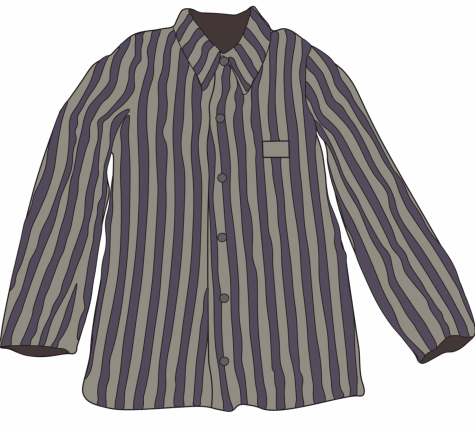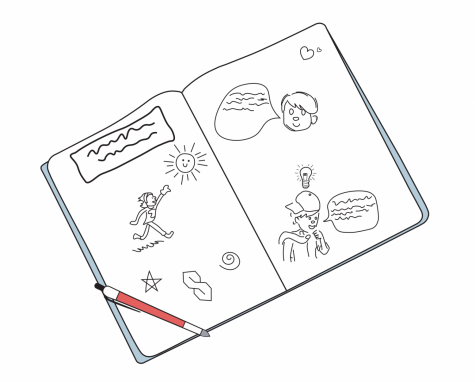Books
November 9, 2020
“The Boy in the Striped Pajamas” by John Boyne

Summary
We’ve all been taught about the Holocaust, and we’ve all been told that it was horrific, but in “The Boy in the Striped Pajamas,” John Boyne allows us to see it for ourselves.
It tells the Holocaust from the eyes of a 9-year-old German boy named Bruno. Bruno doesn’t know a lot about his father’s line of work — all he knows is that it’s the reason why his family is able to live in their large house in Berlin. And he knows that it’s important.
But one day, his father gets a new job that brings the family to a strange new house. On the family’s first day there, Bruno looks out from his bedroom window and sees a tall fence in the distance. Crowds of men and boys that are all wearing what look like striped pajamas and caps are behind it.
As the book progresses, two things become clear: One, the men behind the fence are suffering. And two, it’s at the hands of Bruno’s father.
What you’ll learn
If you’ve watched the movie adaptation, you know that this story is sad. It’s a hard look at merciless Jewish persecution, but little Bruno is never able to fully comprehend what is happening. At the heart of the book is Bruno’s friendship with a Jewish boy named Shmuel who lives behind the fence. Even though Bruno’s father and the German soldiers keep reminding Bruno that he is superior to Jews, Bruno never stops believing that Shmuel is just as human as he is.
The Holocaust has become such a staple in the high school history curriculum that can be easy to lose sight of what actually happened between assigned reading and essays — but “The Boy in the Striped Pajamas” will force you to see the Holocaust victims as people instead of numbers. And it will probably make you cry.
“Bloodlines: Race, Cross, and the Christian” by John Piper
Summary
I go to church regularly, and George Floyd’s death over the summer sparked a lot of discussion in my church about race. In fact, the Sunday after the incident my pastor pushed his prepared message to the next week so that he could address it. He said that it was important for White Christians to honor their Black brothers and sisters, and that’s the phrase Bloodlines” revolves around: brothers and sisters.
In this book, John Piper, who is White, openly talks about his childhood in segregated South Carolina — how he used to look down on Black people and saw no problem with the segregation in his church. After this, he talks about what he believes can solve the racism he sees among Christians today: the good news that Jesus Christ died and rose for all ethnicities.
What you’ll learn
What I like about “Bloodlines” is that it doesn’t stop at providing the gospel as the answer to racial conflict — it will walk Christians through exchanging a race-focused mindset for a gospel-focused mindset, and will help them love people that are different from them.
Christians will leave this book with more knowledge of how to avoid exclusive Christianity and seek unity with believers of all races, while non-Christians will learn that though racism is sometimes committed in the name of God, He longs for His people to be unified.
“New Kid” by Jerry Craft

Summary
I’m thoroughly convinced that “New Kid” is every Black American teenager’s dream.
It’s a graphic novel about seventh grader Jordan Banks, who loves cartooning. He deals with things by drawing about them, and he’s hoping that his parents will let him go to art school this year.
But instead, they send him to Riverdale Academy Day School, a private school known for its academics and opportunities, but also for its mostly White population. And so Jordan has to navigate being not only the new kid, but one of the few Black students at school.
“New Kid” is funny and heartbreakingly honest, with cartoons by Jordan about everything from how to properly shake hands to handling subtle racism.
What you’ll learn
Jordan’s struggle with balancing his “White” life at school and his “Black” life at home is something that I related to and know that a lot of minority youth will too. “New Kid” also exposes stereotypes that are commonly associated with Black people, like the idea that all Black people need financial help and have difficult home lives. It also helps Black students understand what to do when they’re faced with them.
“The Diary of a Young Girl” by Anne Frank
Summary
Anne Frank’s diary is usually assigned reading in middle school, and rightfully so — this book deserved to be mentioned in any classroom discussion about the Holocaust.
It follows Anne Frank as her primary concerns go from algebra and boy troubles to deciding which of her possessions she can take with her as she flees her home in Amsterdam during World War Two. Before their whereabouts are eventually betrayed to the Nazi secret police, the Franks and another Jewish family spend two years in hiding in an office building, and the book is full of Anne’s reflections during that time.
Since it was a teenager’s diary, “The Diary of a Young Girl” is written in simple language, making it easy to follow. And though it was written decades ago, it can be strangely relatable. Anne’s writing is down-to-earth, wise and hopeful.
What you’ll learn
I think we tend to associate racial issues with racism towards Black people, but “The Diary of Anne Frank” shines some light on the Holocaust — one of the worst race-based genocides in history.
Anne confided in this diary when she felt like she couldn’t confide in anyone else. She named it Kitty and told it all of her thoughts and emotions. So in this diary are the thoughts of a persecuted Jew, and it’s difficult to leave the Holocaust out of discussions about racism when you read about it from this point of view.
“The Diary of a Young Girl” is important, not just because of its historical value, but because of the stance it takes — a Jewish girl who believes that things are going to be okay despite everything. Her narrative teaches about perseverance, positivity and hope.